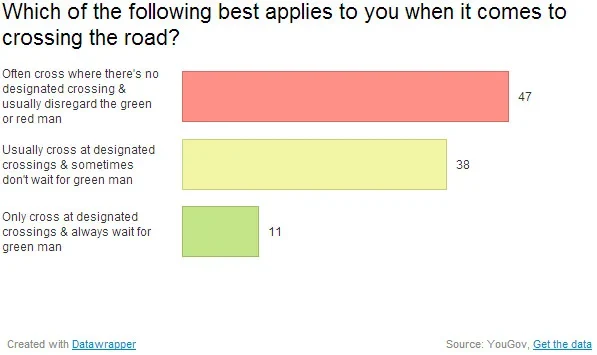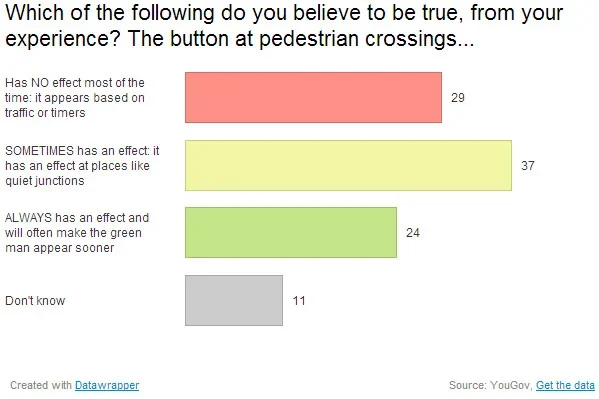Nearly half of British adults often ignore the green man when crossing the road, while 29% don’t think the button at pedestrian crossings does anything useful
A common quandary: you’re stood at a pedestrian crossing, waiting with the red man illuminated and cars passing. You could press the button. You could ignore it and just wait for the green man to appear. Or you could just ignore both, wait till the traffic gives way, and cross anyway.
New YouGov research suggests that if you often pick the third option – ignoring the buttons at crossings and of the authority of the green man – you are far from alone.
Indeed 47% of British adults say they often don’t even bother to find a designated crossing when they need to cross the road – and if they do find one, they usually just cross when the traffic allows, regardless of whether there’s a red or a green man. Another 38% ‘usually’ use designated crossings and mind the green man at pelican crossings, but only 11% always follow the rules, traversing the road only at designated crossings and waiting for the green man to flash every time.

The groups most likely to say they don’t bother with designated crossings are Conservative voters (56%), UKIP voters (55%) and 40-59 year-olds (55%).
British adults are also widely opposed to making it illegal to 'jaywalk', or cross the road away from designated spots.
77% of the British public want jaywalking to remain legal, while 14% want the practice made illegal, like it is in some areas of the United States and Northern Europe.
Does pressing the button do anything?
Whether pedestrians bother pressing the button at pelican crossings probably depends on their answer to a further question, recently posed by BBC News Magazine: does pressing the pedestrian crossing button actually do anything? ‘Sometimes’, according to the BBC’s investigation.
But are Britons in on it? Many aren’t.
24% of British adults believe that the button always has an effect, and will often make the green man appear sooner. Even more (29%) hold the opposing belief that the majority crossings rely on traffic or timers and that the button is ineffectual most of the time. However, the largest group – 37% – does get it right: at quiet junctions, the button can make a difference.










